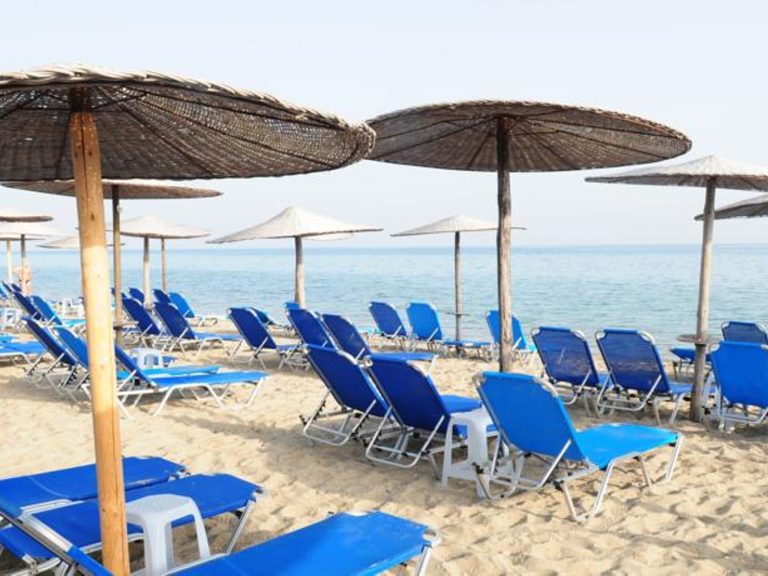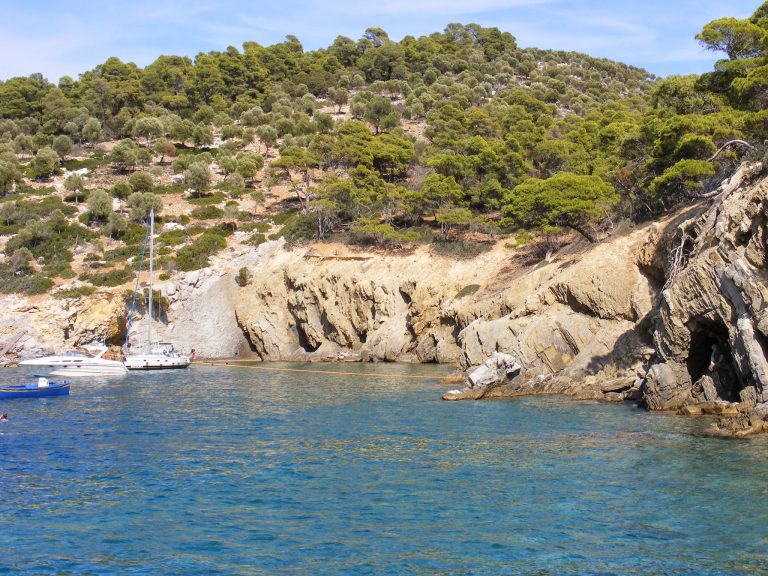NAXOS
Naxos is the largest, most fertile of the Cyclades. It has vineyards, olive groves, and orchards and also grows vegetables. It also has emery and marble quarries. Naxos town is a small, picturesque town with a strong medieval character. Not far from the town are the ruins of a Mycenaean settlement and an impressive gate from the Temple of Apollo, built in the 6th century B.C.
The museum of Naxos houses a rich collection of finds of Cycladic and Mycenaean times and some statues of classical times. The villages of the island are quiet and beautiful resorts.
PAROS
Paros is one of the largest of the Cycladic islands. The ancient Cretans are thought to have inhabited it. In ancient times Paros was famous for its marble which, together with that of Moun Pendeli in Attica, was what sculptors of those days used to create their superb masterpieces, that today embellish many of the world’s museums. Paros also had a rich intellectual and artistic tradition, as the birthplace of Scopas and Agoracritus, sculptors; Nikanor and Arkesilaos, painters; and of the celebrated satirical poet Archilochos.
Today Paros is well-known for its wonderful Church of Panaghia “Ekatontapyliani” (Holy Virgin of the Hundred Gates), or “Katapoliani”. The main town of the island is Paroikia. South of it is the interesting ancient “Grotto of the Nymphs” and a little way beyond the ruins of a Temple of Asclépios.
THERA
Thera or Santorini has attracted the world’s attention in recent years because of the amazing discoveries of archaeological excavations. At the south end of the island, near the village of Acrotiri, a whole prehistoric Minoan city has been dug up, complete with its squares, streets, and two-storied houses. The excavations began in 1967 and are still going on.
So far, archaeologists have uncovered finds that attest to a great civilization that was destroyed by a volcanic eruption. What really stands out from among these wonderful discoveries are the unique frescoes. They depict Springtime, Antelopes, Apes, Ladies, a fisherman, and many others, all of which have been painstakingly removed from Santorini and set in the National Archaeological Museum in Athens. Apart from the ruins, one can also visit Phira, the pretty township of Thera, with its white-washed houses and panoramic views from the terraces. Little Kameni, the tiny isle which surfaced in the middle of the bay in 1573 A.D., still has a smoldering volcano in its center.
Anafi is the last of the South-West Cyclades. It has only 400 inhabitants and nearly as many churches. There is also a castle, and a monastery built on the site of a temple of Apollo.
Amorgos
Amorgos which lies to the south-east of Naxos is one of the prettiest islands in the Aegean. It has a population of 2,000 and is notable for its very marked Cycladic architecture. There are lots of things to see a Venetian castle, for instance, and the famous Convent of the Presentation of the Virgin, or Chozoviotissa, dating from Byzantine times. It contains a miraculous icon. Landings are made at Katapoia, and the island’s capital lies on a hill above, accessible by track. The remains of ancient Minoa may be seen near Katapoia. Algiali, the second part of the island, has an acropolis that protected the ancient harbor, and the remains of a temple of Athena built into a church.
Several small islands lie between Naxos, los, and Amorgos. Donousa has four settlements, and significant remains from the geometric period in the Cyclades have been found there. Koufonisia (consisting of Pano Koufonisi and Kato Koufonisi) have ancient and Byzantine remains, while Herakleia was actually quite well known in ancient times. There is also a cave with rather impressive stalactites, and Herakleia is one of the larger of these islands. Schoinousa has 200 inhabitants and a few ancient ruins to show. Karos, however, is inhabited only by sheep and their shepherds.
Also, in the Western Cyclades are the islands of Kea, Kythnos, Serifos, and Sifnos. Sifnos is notable for its blindingly white houses and streets, and also for the extent to which local pottery has developed as a craft. At Apollonia, Vathy, Exambela, Katavatis, and Chrysopigi Byzantine churches and monasteries, ancient walls, and medieval ruins may be seen.
IOS
Ios is a small island lying between Paros and Santorini (Thera). It has some small hotels, private rooms, houses, and tavernas specializing in “kakavia” a kind of Greek bouillabaisse. Ios has some marvelous beaches and offers a quiet and Interesting stay. It has also remained of ancient times and some 400 small chapels. In the village of Plakoto, the inhabitants display an ancient tomb which they claim to be the tomb of Homer.
Milos is the isle of Aphrodite and the unique catacombs. Along with Kimolos, Antlmilos, and Folegandros, Milos forms the western edge of the Cyclades. This is the place in which the famous statue of Aphrodite was discovered during the last century and spirited off to the Louvre In Paris, where it remains.
Near the village of Klima are the most important Christian catacombs in the world, after those in Rome. They were built in the 1st century A.D., are 200 m. long, and their labyrinthine galleries contain 294 graves in the walls and floor, all decorated with symbols and frescoes.
The frescoes on the palace walls show people on holiday, sitting in ranks in a stadium, the women gossiping and chattering. A bull game, shown In a palace fresco, depicts a young acrobat grasping the horns of a charging bull and hurling In a somersault over its back to being caught in the arms of a girl acrobat as he lands.
The Minoan women seemed to favor large and shady hats trimmed with ribbon, and very low-necked dresses with puffed-out sleeves, wasp waists, and flounced skirts. Their bosoms were bare or very lightly veiled, which prompted a Frenchman to exclaim when he saw the Cretan statuettes for the first time: “These are Parisiennes!”.
Knossos Is vastly intricate. A maze-like structure, the Labyrinth of tradition. The word derives from “Labrys” the Lydian term for double-ax. This emblem was the symbol of the palace of Knossos since It occurs so many times on the masonry and as a motif of decoration.

